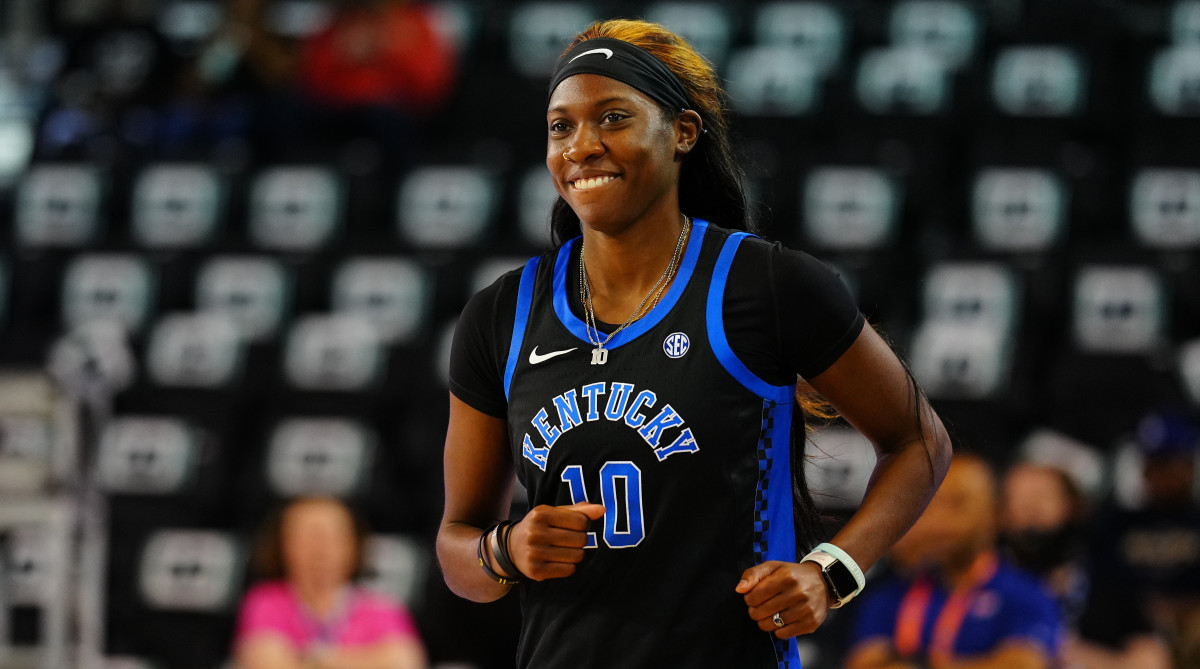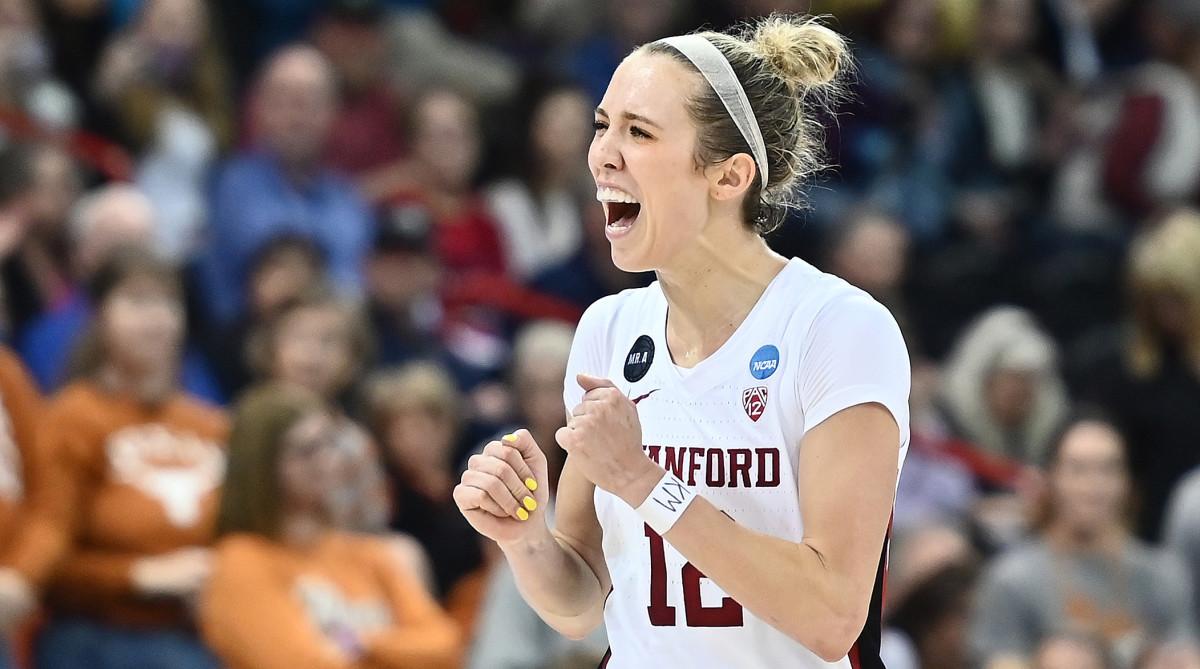Top Names, Sleepers and the Key Things to Know About the 2022 WNBA Draft
The college basketball season might have ended less than a week ago, but the WNBA draft is already upon us. Set for Monday at 7 p.m. ET, a number of players who were recently competing in the Final Four will hope to hear their names called and begin the next stage of their basketball journeys. Want a team-by-team breakdown of what every W roster needs? My colleague Wilton Jackson has you covered. But here are five other things you need to know about Monday’s event.
The return of an in-person draft
For the first time since 2019—and for the first time in WNBA commissioner Cathy Engelbert’s tenure—the league will be hosting an in-person draft, doing so at Spring Studios in lower Manhattan. As part of that return, 12 prospects will be in attendance. The WNBA has also announced plans for three events taking place in New York City in the lead-up to draft night, including a plan to have the invitees visit the Empire State Building, a collaboration with the street team to paint to “paint the town orange” and a prospect mini tour, which will transport some of the invitees around different parts of the city.

Who are the top names to watch?
The first three names expected to be taken off the board are guard Rhyne Howard, forward NaLyssa Smith and center Shakira Austin. Howard was the SEC Player of the Year in each of the past two seasons and emerged as one of college basketball’s top scorers by the end of her time at Kentucky. While the Wildcats were upset in the first round of the NCAA tournament by Princeton, Howard and her teammates picked up one of the most significant wins of the entire college season, defeating eventual national champion South Carolina in the SEC tournament title game. “Obviously, a good-sized wing player who can score in multiple ways and also has the ability to defend when she wants to,” Dream general manager Dan Padover told reporters earlier this week.
Smith was a star for Baylor, having won the Wade Trophy given to the nation’s top player in 2020–21. Last season, she averaged 22.1 points and 11.5 rebounds per game—both in the top 10 nationally—and shot 55% from the field. While a limited three-point threat, Smith brings an aggression to the floor, especially on the offensive end and should provide whatever team selects her with an instant impact.
Austin is not the most efficient offensive player, but she developed into one of the country’s best centers by the end of her college career. The two-time All-America honorable mention played first at Maryland and later transferred to Ole Miss, where she became a focal point of both the Rebels’ offense and defense. Austin has averaged at least 15 points and nine rebounds in each of the past two seasons, becoming a likely top-five pick in the process.
Whose stock rose after the NCAA tournament?
Don’t be surprised if both South Carolina’s Destanni Henderson and Louisville’s Emily Engstler hear their names called in the top 10 in the aftermath of Final Four runs. Henderson played perhaps her best collegiate game in the national championship, scoring a career-high 26 points to lift South Carolina over UConn. Coach Dawn Staley has lauded the growth she displayed from the start of her time with the Gamecocks, with Henderson becoming an impactful force on both ends of the floor. For her efforts throughout March Madness, specifically, she was named to the event’s All-Tournament team.
Engstler showcased her versatility while playing for the Cardinals last season. She was a first-team All-ACC and All-Defensive team member and was one of the 10 semifinalists for the Naismith National Defensive Player of the Year award. In the NCAA tournament, she averaged 14.4 points and 13.3 rebounds per game, including scoring 20 against Tennessee in the Sweet 16 and a team-high 18 in the national semifinal vs. South Carolina. Said Fever general manager Lia Dunn: “Lots to like about her, a four player that can spread the floor, knock down threes, get to the rim. Really, really intense defensive player, high energy, gives you 110% 24/7. Just really high on her and what she can do, and I think she’s going to have a great pro career.”
Why did the Mystics trade the No. 1 pick?
Washington appears to be looking to both build for the future and compete in the present after trading the No. 1 pick in the draft to Atlanta earlier this week. The deal gives the Mystics an added second-round pick this year and the rights to swap their own 2023 first-round pick with the first-round pick the Dream received from the Sparks in a trade earlier this offseason. Washington general manager and coach Mike Thibault told the Washington Post’s Kareem Copeland that the team had reached the point where they were “comfortable with any of the three” top picks. Saying, “we feel like, at three, we’re going to get a player we’re really, really happy with. So why not do the other stuff.
“Was it a big deal to move two spots when we liked all three? If we hadn’t [felt that way], we would have kept the pick.”
Padover, the Dream GM, told reporters that he believes this year’s draft is “probably the best from a depth standpoint since ’18 or ’19.” His team’s trade will get them the opportunity to select what they hopes will be their desired foundational player, and do so after not giving up a ton in the process.

Who are some sleeper names to watch?
Looking for some players who could get drafted after the first round, but could still make an impact this season? Here are three names to watch. Stanford’s Lexie Hull was an honorable mention on the 2021–22 coaches All-America team, having averaged 12.5 points per game on 39.3% shooting from three for the Cardinal. In the NCAA tournament, she upped that total to 18.4 points per game and continued to play stout pick-and-roll defense, another hallmark of her repertoire.
NC State forward Kayla Jones was seldom the centerpiece of the Wolfpack, but she provided the ACC champions with versatility on both ends. Jones, a member of the All-ACC second team, also shot at least 41% from three in each of the past two seasons and is fully capable of becoming an immediate contributor if she does find the right WNBA landing spot.
LSU guard Khayla Pointer continued to show improvement throughout her tenure in Baton Rouge, saving her best season for last when she averaged 19.6 points per game on 42% shooting from the field. While slightly undersized, Pointer proved she can be a lead playmaker for a successful team. Perhaps, in the WNBA, she’ll take on a similar role.
More WNBA Coverage:
